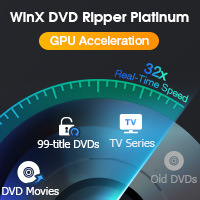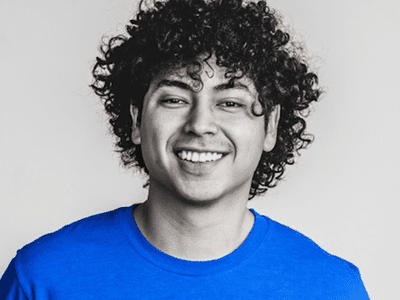
"Forget Not Fundamental Cinematography for Aspiring Directors"

Forget Not: Fundamental Cinematography for Aspiring Directors
15 Types of Camera Shots in Film Beginners Need to Know
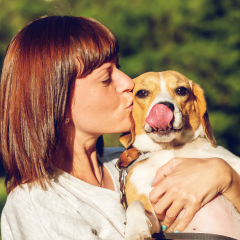
Ollie Mattison
Mar 27, 2024• Proven solutions
No denying, a great video indeed needs to have great camera shots. And this could be considered as one of the universally acknowledged facts.
If you are stepping into this industry , you need to be on good terms with the types of camera shots used in a film.
The nervousness for beginners is natural and completely understood when they decide to make a film if you don’t know the videography tips .
Therefore, through this article, we will cover what are the types of shots in film are used and what function they particularly have that you need to be aware of.
We hope you read this article with all concentration so that your new project is no longer confusing to the viewers.
Key features:
• Import from any devices and cams, including GoPro and drones. All formats supported. Сurrently the only free video editor that allows users to export in a new H265/HEVC codec, something essential for those working with 4K and HD.
• Everything for hassle-free basic editing: cut, crop and merge files, add titles and favorite music
• Visual effects, advanced color correction and trendy Instagram-like filters
• All multimedia processing done from one app: video editing capabilities reinforced by a video converter, a screen capture, a video capture, a disc burner and a YouTube uploader
• Non-linear editing: edit several files with simultaneously
• Easy export to social networks: special profiles for YouTube, Facebook, Vimeo, Twitter and Instagram
• High quality export – no conversion quality loss, double export speed even of HD files due to hardware acceleration
• Stabilization tool will turn shaky or jittery footage into a more stable video automatically.
• Essential toolset for professional video editing: blending modes, Mask tool, advanced multiple-color Chroma Key
Part 1: 7 Types of Shots in film You Should Know
1. Establishing Shot
As the name hints itself, this type of camera shot basically establishes the scene the audience sees as the first shot of your movie .
In other words, the establishing shot provides the viewers a maximum of the city or the whole building scene in one frame.
This doesn’t help your audience guess what location is the scene is being shot but they can estimate the time when the scene is taking place.
With this type of shot in the film , you are typically showing and not telling the audience through narrative and it is completely enough to let the audience know the concept.

2. Extreme Long Shot
This type of camera shot is taken from a long distance. This brings the audience an idea where the character belongs to regarding the time and the place.
You will also allow the audience to know the emotional relationship to the environment where there is no need to show the character.

3. Long Shot
Long shot or often known as the wide shot uses characters in the shot. Each character is shown head to toe in relation to the surroundings, location or each other.
Also, the chief character or say the protagonist should have a major presence in the frame.
Moreover, while using this type of camera shot, you must take care that it should be dominated by the scenery.
4. Full Shot
Here, the location can be ignored from keeping in the focus.
The main focus should be on the character in such type of shot in the film. Also, the shot should highlight the action or the movement of the character from head to toe and not his/her emotional condition .
For instance, the audience must get the idea whether your character is confident, weird or sophisticated with just his/her appearance, outfit and the action.

5. Medium Shot
Medium shot basically stands between the full and the close-up shot.
Putting differently, this type of camera shot shows an amalgamation of the body actions and the facial expressions.
The purpose of this shot is to keep the character looking natural.

6. Close-Up shot
The name brings a crystal clear image of the type of shot itself. With this shot, one brings out the character’s face thereby helping the audience to understand the emotional thoughts of the character.
This shot basically provides what you miss in the medium shot . Bringing the character’s shot more detailing, for instance tear or the frowning so that the audience can anticipate what the character is feeling in that particular shot.
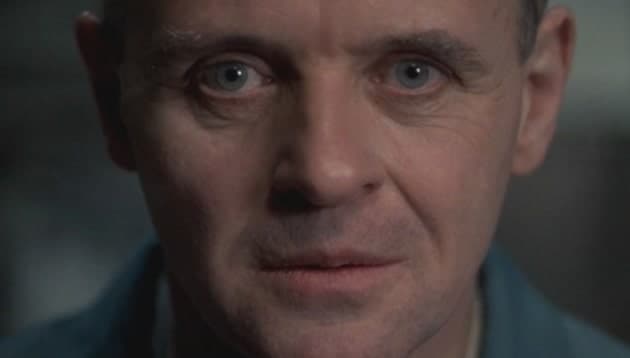
7. Extreme Close Up
To make the audience visualize only some features of the character, the Extreme Close-up comes in handy.
This type of shot in films aims to fit the single feature on the entire screen. For instance, only the mouth, lips or eyes of the character are revealed in the frame.
You may also like: 10 Best Free Security Camera Software >>
Part 2: Shots Angles for Camera
8. Eye Shots
These types of shots are taken keeping the camera exactly at the human eye level . Using these bring the neutral effect of the shot.

9. High Shots
High angled shots, unsurprisingly are recorded from the level above than the eye. Basically, this shot type is used to give the weak, unsafe or the terrified impact of the subject.
10. Low Shots
Contrary to the above, this type of shot in the film is taken from the level below than the eye. And not to mention, low shots are used to give the heroic, risky or powerful impact to the subject.

11. Tilt shots
To give an effect of uneasy psychological state to the audience, on should go for the tilt shots.
These types of camera shots are taken by setting the camera at an angle on it roll axis to unlevel the horizon line.
12. Over-the-Shoulder Shot
This is the types of camera shot that is photographed from the back, or shoulder to be precise of another person.
The subject to be highlighted is kept at somewhere between medium to close-up shot. These types of camera shots are perfect when you want your audience to notice the reactions of the subject during a conversation.
Also, the subject in these shots, faces the camera making their neck and shoulder viewable on the frame.

13. Cut-In
This shot typically cuts the screen into two or three or sometimes four parts.
It is helpful when you have multiple things to be shown as important in one scene. It takes close-up of the thing that you want to show your viewer.
14. Master Shot
A shot that is recorded from a single angle and is an uninterrupted shot to bring all the characters in view is referred to as the master shot .
It is basically the complete dramatized shot and can be edited together with other additional shots.
Also, this type of shot can be considered as the only shot to be used by a director for covering the scene. It can be a closer shot, full or long shot.
15. Point of View Shot
POV or Point of View is a shot that focuses on what a character is trying to see in a scene.
The beauty of this type of shot is that the audience gets the picture of what’s going on in the character’s head.
For example, looking through the binoculars and shooting only where the character is seeing.

Conclusion
To enhance the visual appearance of a movie, one has to master the types of shots in film. We have described every possible thing that we felt you need to know regarding this.
We hope you learnt well from this article and from now on will keep in mind all the types of camera shots while shooting your masterpiece.
Please help us by sharing your views on this so that we will update you with more such information. Thanks!

Ollie Mattison
Ollie Mattison is a writer and a lover of all things video.
Follow @Ollie Mattison
Ollie Mattison
Mar 27, 2024• Proven solutions
No denying, a great video indeed needs to have great camera shots. And this could be considered as one of the universally acknowledged facts.
If you are stepping into this industry , you need to be on good terms with the types of camera shots used in a film.
The nervousness for beginners is natural and completely understood when they decide to make a film if you don’t know the videography tips .
Therefore, through this article, we will cover what are the types of shots in film are used and what function they particularly have that you need to be aware of.
We hope you read this article with all concentration so that your new project is no longer confusing to the viewers.
Part 1: 7 Types of Shots in film You Should Know
1. Establishing Shot
As the name hints itself, this type of camera shot basically establishes the scene the audience sees as the first shot of your movie .
In other words, the establishing shot provides the viewers a maximum of the city or the whole building scene in one frame.
This doesn’t help your audience guess what location is the scene is being shot but they can estimate the time when the scene is taking place.
With this type of shot in the film , you are typically showing and not telling the audience through narrative and it is completely enough to let the audience know the concept.

 TubeDigger - online video downloader from mostly any site
TubeDigger - online video downloader from mostly any site
2. Extreme Long Shot
This type of camera shot is taken from a long distance. This brings the audience an idea where the character belongs to regarding the time and the place.
You will also allow the audience to know the emotional relationship to the environment where there is no need to show the character.

3. Long Shot
Long shot or often known as the wide shot uses characters in the shot. Each character is shown head to toe in relation to the surroundings, location or each other.
Also, the chief character or say the protagonist should have a major presence in the frame.
Moreover, while using this type of camera shot, you must take care that it should be dominated by the scenery.
4. Full Shot
Here, the location can be ignored from keeping in the focus.
The main focus should be on the character in such type of shot in the film. Also, the shot should highlight the action or the movement of the character from head to toe and not his/her emotional condition .
For instance, the audience must get the idea whether your character is confident, weird or sophisticated with just his/her appearance, outfit and the action.

5. Medium Shot
Medium shot basically stands between the full and the close-up shot.
Putting differently, this type of camera shot shows an amalgamation of the body actions and the facial expressions.
The purpose of this shot is to keep the character looking natural.

6. Close-Up shot
The name brings a crystal clear image of the type of shot itself. With this shot, one brings out the character’s face thereby helping the audience to understand the emotional thoughts of the character.
This shot basically provides what you miss in the medium shot . Bringing the character’s shot more detailing, for instance tear or the frowning so that the audience can anticipate what the character is feeling in that particular shot.

7. Extreme Close Up
To make the audience visualize only some features of the character, the Extreme Close-up comes in handy.
This type of shot in films aims to fit the single feature on the entire screen. For instance, only the mouth, lips or eyes of the character are revealed in the frame.
You may also like: 10 Best Free Security Camera Software >>
Part 2: Shots Angles for Camera
8. Eye Shots
These types of shots are taken keeping the camera exactly at the human eye level . Using these bring the neutral effect of the shot.

9. High Shots
High angled shots, unsurprisingly are recorded from the level above than the eye. Basically, this shot type is used to give the weak, unsafe or the terrified impact of the subject.
10. Low Shots
Contrary to the above, this type of shot in the film is taken from the level below than the eye. And not to mention, low shots are used to give the heroic, risky or powerful impact to the subject.

11. Tilt shots
To give an effect of uneasy psychological state to the audience, on should go for the tilt shots.
These types of camera shots are taken by setting the camera at an angle on it roll axis to unlevel the horizon line.
12. Over-the-Shoulder Shot
This is the types of camera shot that is photographed from the back, or shoulder to be precise of another person.
The subject to be highlighted is kept at somewhere between medium to close-up shot. These types of camera shots are perfect when you want your audience to notice the reactions of the subject during a conversation.
Also, the subject in these shots, faces the camera making their neck and shoulder viewable on the frame.

13. Cut-In
This shot typically cuts the screen into two or three or sometimes four parts.
It is helpful when you have multiple things to be shown as important in one scene. It takes close-up of the thing that you want to show your viewer.
14. Master Shot
A shot that is recorded from a single angle and is an uninterrupted shot to bring all the characters in view is referred to as the master shot .
It is basically the complete dramatized shot and can be edited together with other additional shots.
Also, this type of shot can be considered as the only shot to be used by a director for covering the scene. It can be a closer shot, full or long shot.
15. Point of View Shot
POV or Point of View is a shot that focuses on what a character is trying to see in a scene.
The beauty of this type of shot is that the audience gets the picture of what’s going on in the character’s head.
For example, looking through the binoculars and shooting only where the character is seeing.

Conclusion
To enhance the visual appearance of a movie, one has to master the types of shots in film. We have described every possible thing that we felt you need to know regarding this.
We hope you learnt well from this article and from now on will keep in mind all the types of camera shots while shooting your masterpiece.
Please help us by sharing your views on this so that we will update you with more such information. Thanks!
 Project Manager - Asset Browser for 3Ds Max
Project Manager - Asset Browser for 3Ds Max

Ollie Mattison
Ollie Mattison is a writer and a lover of all things video.
Follow @Ollie Mattison
Ollie Mattison
Mar 27, 2024• Proven solutions
No denying, a great video indeed needs to have great camera shots. And this could be considered as one of the universally acknowledged facts.
If you are stepping into this industry , you need to be on good terms with the types of camera shots used in a film.
The nervousness for beginners is natural and completely understood when they decide to make a film if you don’t know the videography tips .
Therefore, through this article, we will cover what are the types of shots in film are used and what function they particularly have that you need to be aware of.
We hope you read this article with all concentration so that your new project is no longer confusing to the viewers.
Part 1: 7 Types of Shots in film You Should Know
1. Establishing Shot
As the name hints itself, this type of camera shot basically establishes the scene the audience sees as the first shot of your movie .
In other words, the establishing shot provides the viewers a maximum of the city or the whole building scene in one frame.
This doesn’t help your audience guess what location is the scene is being shot but they can estimate the time when the scene is taking place.
With this type of shot in the film , you are typically showing and not telling the audience through narrative and it is completely enough to let the audience know the concept.

2. Extreme Long Shot
This type of camera shot is taken from a long distance. This brings the audience an idea where the character belongs to regarding the time and the place.
You will also allow the audience to know the emotional relationship to the environment where there is no need to show the character.

3. Long Shot
Long shot or often known as the wide shot uses characters in the shot. Each character is shown head to toe in relation to the surroundings, location or each other.
Also, the chief character or say the protagonist should have a major presence in the frame.
Moreover, while using this type of camera shot, you must take care that it should be dominated by the scenery.
4. Full Shot
Here, the location can be ignored from keeping in the focus.
The main focus should be on the character in such type of shot in the film. Also, the shot should highlight the action or the movement of the character from head to toe and not his/her emotional condition .
For instance, the audience must get the idea whether your character is confident, weird or sophisticated with just his/her appearance, outfit and the action.

5. Medium Shot
Medium shot basically stands between the full and the close-up shot.
Putting differently, this type of camera shot shows an amalgamation of the body actions and the facial expressions.
The purpose of this shot is to keep the character looking natural.

6. Close-Up shot
The name brings a crystal clear image of the type of shot itself. With this shot, one brings out the character’s face thereby helping the audience to understand the emotional thoughts of the character.
This shot basically provides what you miss in the medium shot . Bringing the character’s shot more detailing, for instance tear or the frowning so that the audience can anticipate what the character is feeling in that particular shot.

7. Extreme Close Up
To make the audience visualize only some features of the character, the Extreme Close-up comes in handy.
This type of shot in films aims to fit the single feature on the entire screen. For instance, only the mouth, lips or eyes of the character are revealed in the frame.
You may also like: 10 Best Free Security Camera Software >>
Part 2: Shots Angles for Camera
8. Eye Shots
These types of shots are taken keeping the camera exactly at the human eye level . Using these bring the neutral effect of the shot.

9. High Shots
High angled shots, unsurprisingly are recorded from the level above than the eye. Basically, this shot type is used to give the weak, unsafe or the terrified impact of the subject.
10. Low Shots
Contrary to the above, this type of shot in the film is taken from the level below than the eye. And not to mention, low shots are used to give the heroic, risky or powerful impact to the subject.

11. Tilt shots
To give an effect of uneasy psychological state to the audience, on should go for the tilt shots.
These types of camera shots are taken by setting the camera at an angle on it roll axis to unlevel the horizon line.
### 12\. Over-the-Shoulder ShotThis is the types of camera shot that is photographed from the back, or shoulder to be precise of another person.
The subject to be highlighted is kept at somewhere between medium to close-up shot. These types of camera shots are perfect when you want your audience to notice the reactions of the subject during a conversation.
Also, the subject in these shots, faces the camera making their neck and shoulder viewable on the frame.

13. Cut-In
This shot typically cuts the screen into two or three or sometimes four parts.
It is helpful when you have multiple things to be shown as important in one scene. It takes close-up of the thing that you want to show your viewer.
14. Master Shot
A shot that is recorded from a single angle and is an uninterrupted shot to bring all the characters in view is referred to as the master shot .
It is basically the complete dramatized shot and can be edited together with other additional shots.
Also, this type of shot can be considered as the only shot to be used by a director for covering the scene. It can be a closer shot, full or long shot.
15. Point of View Shot
POV or Point of View is a shot that focuses on what a character is trying to see in a scene.
The beauty of this type of shot is that the audience gets the picture of what’s going on in the character’s head.
For example, looking through the binoculars and shooting only where the character is seeing.

Conclusion
To enhance the visual appearance of a movie, one has to master the types of shots in film. We have described every possible thing that we felt you need to know regarding this.
We hope you learnt well from this article and from now on will keep in mind all the types of camera shots while shooting your masterpiece.
Please help us by sharing your views on this so that we will update you with more such information. Thanks!

Ollie Mattison
Ollie Mattison is a writer and a lover of all things video.
Follow @Ollie Mattison
Ollie Mattison
Mar 27, 2024• Proven solutions
No denying, a great video indeed needs to have great camera shots. And this could be considered as one of the universally acknowledged facts.
If you are stepping into this industry , you need to be on good terms with the types of camera shots used in a film.
The nervousness for beginners is natural and completely understood when they decide to make a film if you don’t know the videography tips .
Therefore, through this article, we will cover what are the types of shots in film are used and what function they particularly have that you need to be aware of.
We hope you read this article with all concentration so that your new project is no longer confusing to the viewers.
Part 1: 7 Types of Shots in film You Should Know
1. Establishing Shot
As the name hints itself, this type of camera shot basically establishes the scene the audience sees as the first shot of your movie .
In other words, the establishing shot provides the viewers a maximum of the city or the whole building scene in one frame.
This doesn’t help your audience guess what location is the scene is being shot but they can estimate the time when the scene is taking place.
With this type of shot in the film , you are typically showing and not telling the audience through narrative and it is completely enough to let the audience know the concept.

2. Extreme Long Shot
This type of camera shot is taken from a long distance. This brings the audience an idea where the character belongs to regarding the time and the place.
You will also allow the audience to know the emotional relationship to the environment where there is no need to show the character.

3. Long Shot
Long shot or often known as the wide shot uses characters in the shot. Each character is shown head to toe in relation to the surroundings, location or each other.
Also, the chief character or say the protagonist should have a major presence in the frame.
Moreover, while using this type of camera shot, you must take care that it should be dominated by the scenery.
4. Full Shot
Here, the location can be ignored from keeping in the focus.
The main focus should be on the character in such type of shot in the film. Also, the shot should highlight the action or the movement of the character from head to toe and not his/her emotional condition .
For instance, the audience must get the idea whether your character is confident, weird or sophisticated with just his/her appearance, outfit and the action.

5. Medium Shot
Medium shot basically stands between the full and the close-up shot.
Putting differently, this type of camera shot shows an amalgamation of the body actions and the facial expressions.
The purpose of this shot is to keep the character looking natural.

6. Close-Up shot
The name brings a crystal clear image of the type of shot itself. With this shot, one brings out the character’s face thereby helping the audience to understand the emotional thoughts of the character.
This shot basically provides what you miss in the medium shot . Bringing the character’s shot more detailing, for instance tear or the frowning so that the audience can anticipate what the character is feeling in that particular shot.

7. Extreme Close Up
To make the audience visualize only some features of the character, the Extreme Close-up comes in handy.
This type of shot in films aims to fit the single feature on the entire screen. For instance, only the mouth, lips or eyes of the character are revealed in the frame.
You may also like: 10 Best Free Security Camera Software >>
Part 2: Shots Angles for Camera
It will help you to write dynamic data reports easily, to construct intuitive dashboards or to build a whole business intelligence cockpit.
KoolReport Pro package goes with Full Source Code, Royal Free, ONE (1) Year Priority Support, ONE (1) Year Free Upgrade and 30-Days Money Back Guarantee.
Developer License allows Single Developer to create Unlimited Reports, deploy on Unlimited Servers and able deliver the work to Unlimited Clients.
8. Eye Shots
These types of shots are taken keeping the camera exactly at the human eye level . Using these bring the neutral effect of the shot.
 Software Update Pro - Check and update software installed on your computer.
Software Update Pro - Check and update software installed on your computer.

9. High Shots
High angled shots, unsurprisingly are recorded from the level above than the eye. Basically, this shot type is used to give the weak, unsafe or the terrified impact of the subject.
10. Low Shots
Contrary to the above, this type of shot in the film is taken from the level below than the eye. And not to mention, low shots are used to give the heroic, risky or powerful impact to the subject.

11. Tilt shots
To give an effect of uneasy psychological state to the audience, on should go for the tilt shots.
These types of camera shots are taken by setting the camera at an angle on it roll axis to unlevel the horizon line.
12. Over-the-Shoulder Shot
This is the types of camera shot that is photographed from the back, or shoulder to be precise of another person.
The subject to be highlighted is kept at somewhere between medium to close-up shot. These types of camera shots are perfect when you want your audience to notice the reactions of the subject during a conversation.
Also, the subject in these shots, faces the camera making their neck and shoulder viewable on the frame.

13. Cut-In
This shot typically cuts the screen into two or three or sometimes four parts.
It is helpful when you have multiple things to be shown as important in one scene. It takes close-up of the thing that you want to show your viewer.
14. Master Shot
A shot that is recorded from a single angle and is an uninterrupted shot to bring all the characters in view is referred to as the master shot .
It is basically the complete dramatized shot and can be edited together with other additional shots.
Also, this type of shot can be considered as the only shot to be used by a director for covering the scene. It can be a closer shot, full or long shot.
15. Point of View Shot
POV or Point of View is a shot that focuses on what a character is trying to see in a scene.
The beauty of this type of shot is that the audience gets the picture of what’s going on in the character’s head.
For example, looking through the binoculars and shooting only where the character is seeing.

Conclusion
To enhance the visual appearance of a movie, one has to master the types of shots in film. We have described every possible thing that we felt you need to know regarding this.
We hope you learnt well from this article and from now on will keep in mind all the types of camera shots while shooting your masterpiece.
Please help us by sharing your views on this so that we will update you with more such information. Thanks!

Ollie Mattison
Ollie Mattison is a writer and a lover of all things video.
Follow @Ollie Mattison
- Title: Forget Not Fundamental Cinematography for Aspiring Directors
- Author: Joseph
- Created at : 2024-07-27 08:16:00
- Updated at : 2024-07-28 08:16:00
- Link: https://extra-tips.techidaily.com/forget-not-fundamental-cinematography-for-aspiring-directors/
- License: This work is licensed under CC BY-NC-SA 4.0.


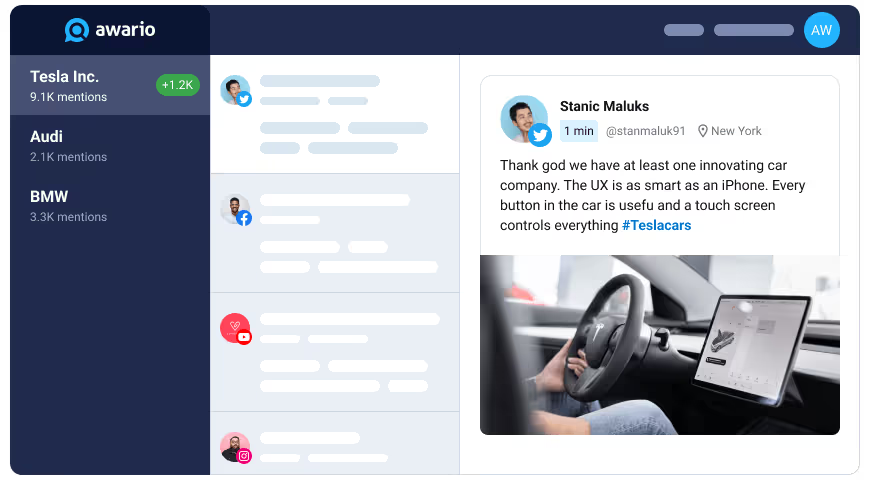


 SwifDoo PDF 2-Year Plan
SwifDoo PDF 2-Year Plan
 Forex Robotron Gold Package
Forex Robotron Gold Package
 WinUtilities Pro
WinUtilities Pro
 PDF application, powered by AI-based OCR, for unified workflows with both digital and scanned documents.
PDF application, powered by AI-based OCR, for unified workflows with both digital and scanned documents.  OtsAV DJ Pro
OtsAV DJ Pro Glarysoft File Recovery Pro Annually - Helps to recover your lost file/data, even permanently deleted data.
Glarysoft File Recovery Pro Annually - Helps to recover your lost file/data, even permanently deleted data.


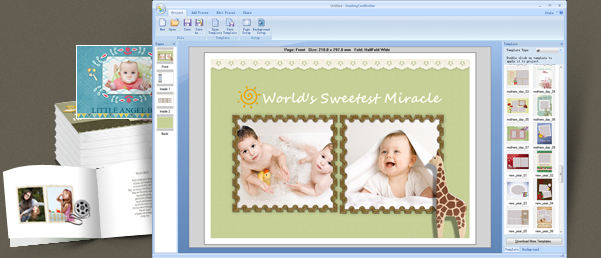 Greeting Card Builder
Greeting Card Builder
 Screensaver Factory, Create stunning professional screensavers within minutes. Create screensavers for yourself, for marketing or unlimited royalty-free commercial distribution. Make screensavers from images, video and swf flash, add background music and smooth sprite and transition effects. Screensaver Factory is very easy to use, and it enables you to make self-installing screensaver files and CDs for easy setup and distribution. Screensaver Factory is the most advanced software of its kind.
Screensaver Factory, Create stunning professional screensavers within minutes. Create screensavers for yourself, for marketing or unlimited royalty-free commercial distribution. Make screensavers from images, video and swf flash, add background music and smooth sprite and transition effects. Screensaver Factory is very easy to use, and it enables you to make self-installing screensaver files and CDs for easy setup and distribution. Screensaver Factory is the most advanced software of its kind.
 Video Converter Factory Pro
Video Converter Factory Pro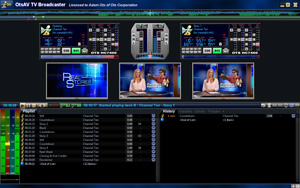 OtsAV TV Webcaster
OtsAV TV Webcaster KoolReport Pro is an advanced solution for creating data reports and dashboards in PHP. Equipped with all extended packages , KoolReport Pro is able to connect to various datasources, perform advanced data analysis, construct stunning charts and graphs and export your beautiful work to PDF, Excel, JPG or other formats. Plus, it includes powerful built-in reports such as pivot report and drill-down report which will save your time in building ones.
KoolReport Pro is an advanced solution for creating data reports and dashboards in PHP. Equipped with all extended packages , KoolReport Pro is able to connect to various datasources, perform advanced data analysis, construct stunning charts and graphs and export your beautiful work to PDF, Excel, JPG or other formats. Plus, it includes powerful built-in reports such as pivot report and drill-down report which will save your time in building ones. 
